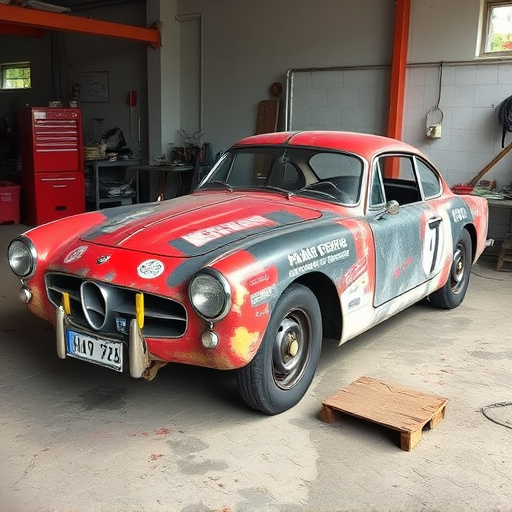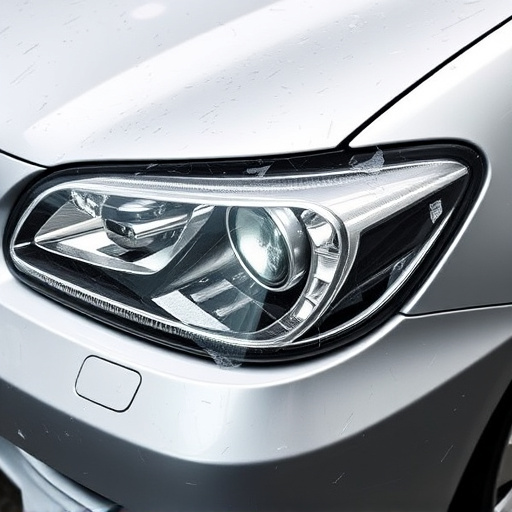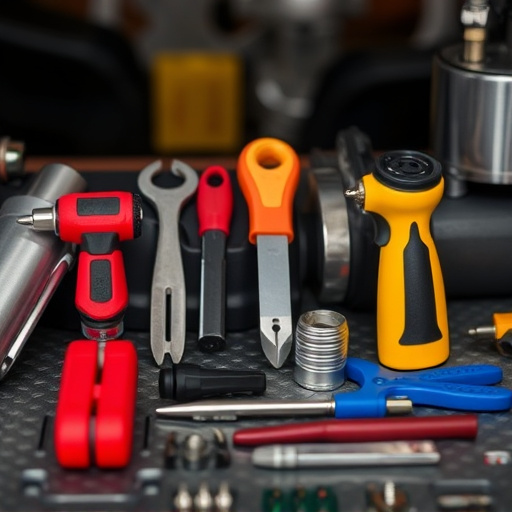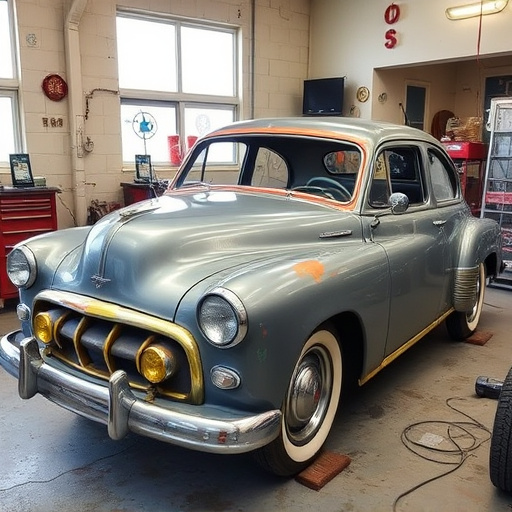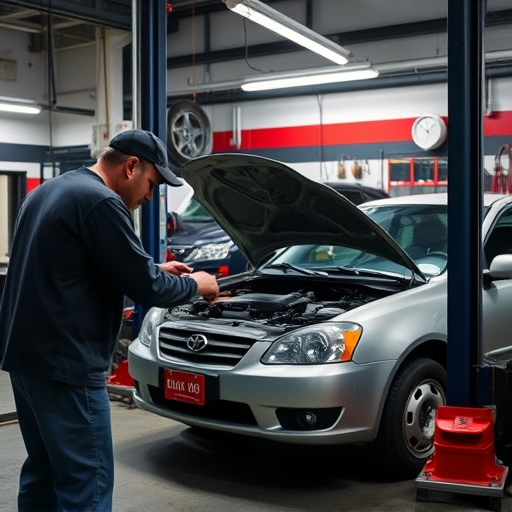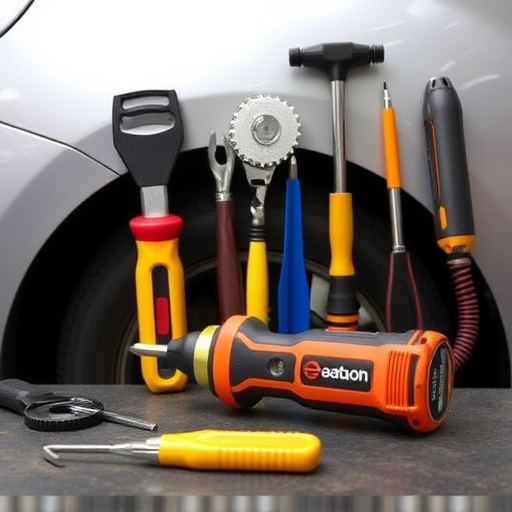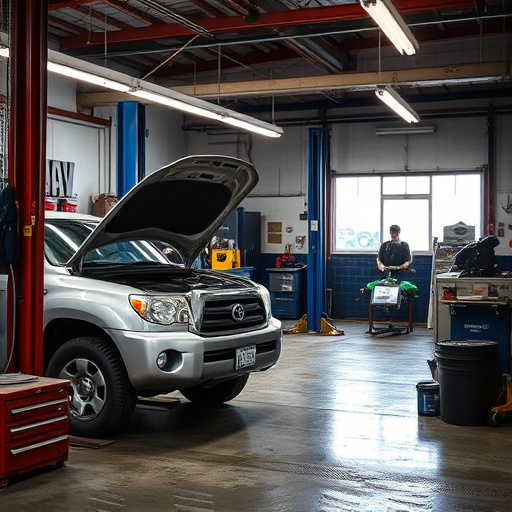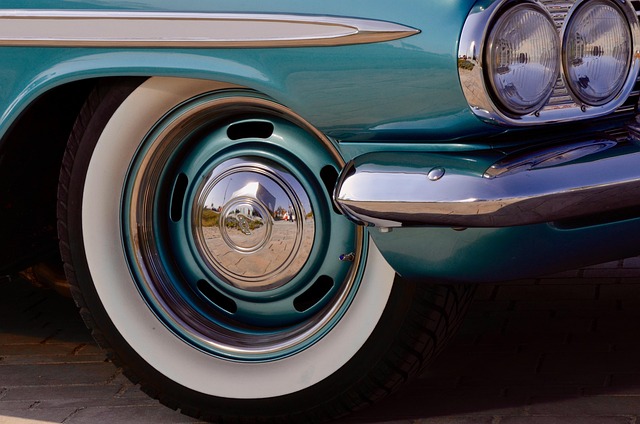Paintless dent removal (PDR) combines specialized hand tools like shavers, picks, and mallets with advanced technologies including air compressors, heat guns, and LED lights to perform skilled, cost-effective, and nearly invisible car dent repairs, preserving the vehicle's original finish and avoiding traditional repainting. This method relies on precision instruments, high-tech sensors, CAD software, and vacuum systems for accurate dent detection and careful metal molding without damaging paintwork. Manual dexterity and knowledge of auto painting/collision repair are crucial for successful PDR.
“Uncover the secrets of seamless car repairs with an exploration of professional paintless dent removal (PDR) services. This comprehensive guide delves into the art and science behind PDR, revealing the tools and techniques that transform damaged vehicles back to their original gleam. From common hand tools to advanced technology, we unravel the essential equipment and skills that define modern PDR practices. Discover how these methods ensure precise, effective, and nearly invisible repairs, making paintless dent removal a game-changer in the automotive industry.”
- Common Tools and Equipment for Paintless Dent Removal
- Advanced Technology in Modern PDR Techniques
- Essential Skills Required for Effective Paintless Repairs
Common Tools and Equipment for Paintless Dent Removal
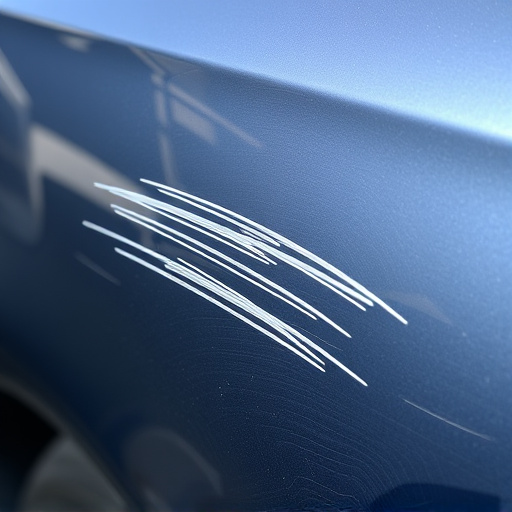
The world of paintless dent removal (PDR) relies on a specialized set of tools and equipment designed to expertly restore vehicles to their pre-damaged condition, minimizing repaint and preserving the original finish. Core to this process are a range of hand tools, such as plastic shavers, picks, and mallets, which allow technicians to carefully extract dents without damaging the surrounding paintwork. These precision instruments come in various shapes and sizes, catering to different dent sizes and contours, ensuring effective yet meticulous removal.
Beyond hand tools, modern PDR services employ advanced technologies like air compressors, heat guns, and LED lights. Air compressors provide the necessary force for expelling dented panels, while heat guns soften and facilitate the reshaping of metal. LED lights play a crucial role in illuminating hidden dents, enabling technicians to accurately assess and treat even the subtlest damage. These tools, combined with skilled expertise, make car dent repair, collision repair, and frame straightening processes efficient, cost-effective, and virtually invisible to the untrained eye.
Advanced Technology in Modern PDR Techniques
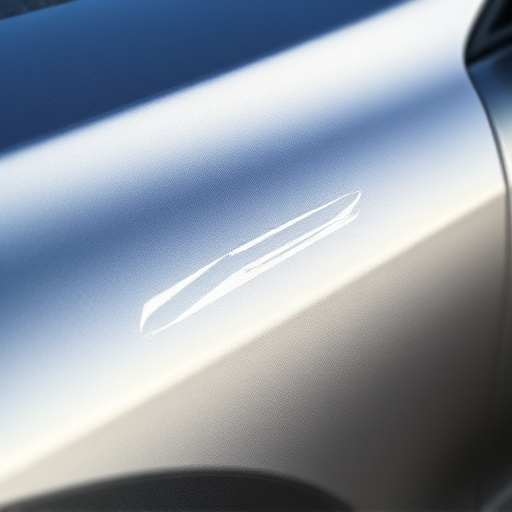
In the realm of modern auto body repairs, paintless dent removal (PDR) has evolved significantly, adopting advanced technology to enhance precision and efficiency. This innovative approach in auto repair shops avoids the traditional painting and repainting process, preserving the vehicle’s original finish while effectively removing dents and dings. PDR technicians now utilize specialized tools that employ minimal force to reshape metal, making it an attractive option for both minor vehicle restoration and intricate dent repairs.
These cutting-edge technologies include high-tech sensors, computer-aided design (CAD) software, and advanced vacuum systems. Sensors detect the exact depth and location of dents, providing accurate measurements for CAD programs that generate precise repair templates. Vacuum systems then carefully apply suction to lift and mold the metal back to its original form without damaging the surrounding paintwork, resulting in flawless vehicle restoration.
Essential Skills Required for Effective Paintless Repairs
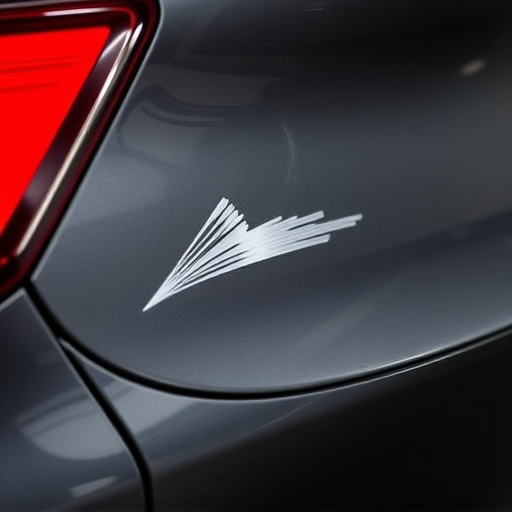
The art of paintless dent removal demands a unique set of skills that go beyond basic automotive knowledge. It’s not just about fixing dents; it involves precise, meticulous work to restore car bodywork to its original condition without disturbing the existing paint job. Professionals in this field need a keen eye for detail, as even the slightest mistake can leave unsightly marks. The process requires a deep understanding of various techniques, such as using specialized tools like dent pullers and pry bars with precision to gently remove dents from the car’s panel.
Effective paintless repairs also necessitate excellent manual dexterity. Technicians must be able to manipulate delicate tools in tight spaces, ensuring they don’t cause further damage or leave scratches. Additionally, knowledge of auto painting and collision repair center practices is vital for identifying potential issues and determining the best course of action for each unique case of car bodywork repair.
Paintless dent removal (PDR) has evolved significantly, leveraging advanced technology and specialized tools to deliver precise, effective repairs. From common hand tools to innovative machine-based systems, professionals in this field employ a range of techniques tailored to different damage types. Essential skills, including meticulous attention to detail and a deep understanding of vehicle panel construction, ensure high-quality, invisible repairs that preserve the original finish. By combining these elements, paintless dent removal services continue to set new standards for automotive cosmetic restoration.
